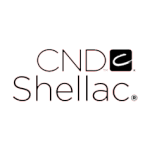Next i checked-out SPE with the interpersonal worry during the stop-distance activity. I conducted a drug ? eye-contact ANOVA on the number of participants’ individual nervousness and detected stress regarding females experimenter. None the main aftereffect of treatment neither the communications having eyes-get in touch with to the a person’s individual stress try significant (P thinking >0.3), maybe reflecting one to users put the same standards to have a highly shameful level to cease the female experimenter regarding the sprinkle + and you will handle courses.
Interestingly, spray + manipulation reduced perceived anxiety in the female experimenter [F(1,29) = 4.485, P = 0.043, ?p 2 = 0.134]. A main effect of eye-contact [F(1,29) = 5.826, P = 0.022, ?p 2 = 0.167] suggested that participants perceived less anxiety in the female experimenter in the no-eye contact situation than in the eye-contact situation. Moreover, we showed a significant treatment ? eye-contact interaction [F(1,29) = 5.009, P = 0.033, ?p 2 = 0.147; Fig. 3B], suggesting that the SPE on perceived anxiety was modulated by eye-contact situations. The placebo treatment reduced perceived anxiety in the female experimenter in the eye-contact situation [t(29) = ?2.648, P = 0.013, Cohen d? = 0.483] but not in the no-eye contact situation (P > 0.5).
Choosy dating friendfinder-x SPE into the Genuine-Lives Interpersonal Distance within the Single Men.
Interpersonal distance is crucially influenced by one’s relationship with others (41, 42). We next examined whether SPE on real-life distance was modulated by romantic relationship status (single vs. pair-bonded). Interestingly, the treatment ? eye-contact ? relationship ANOVA revealed a significant treatment ? relationship interaction [F(1,28) = , P < 0.001, ?p 2 = 0.332; Fig. 3C], suggesting reliable SPE on reducing interpersonal distance in single [t(12) = ?3.739, P = 0.003, Cohen d? = 1.037] but not pair-bonded males [t(16) = 0.697, P = 0.496, Cohen d? = 0.169]. There were only 13 single males and 17 pair-bonded males in Exp. 3, so, to further confirm the modulation of relationship status, we recruited an independent sample of 27 males who completed an identical procedure. The modulation of romantic relationship on SPE on interpersonal distance was further confirmed in the pooled sample (N = 57; SI Appendix, Section 9 and Fig. S5). Single and pair-bonded males were matched in relevant personality and mood related traits (SI Appendix, Section 10 and Table S4).
Comparable Negative effects of Placebo Therapy and you may Active Oxytocin.
Brand new SPE into the social believe and you can interpersonal length resembled the consequences out of effective oxytocin management reported inside previous degree (16, twenty two, 25). Second, so you can really discover the shared and you may choosy negative effects of placebo therapy (we.e., SPE, spraying + compared to. control) and you may effective oxytocin (referred to as “AOE” inside try; AOE against. placebo, that’s referred to as “PL” to tell apart away from placebo perception), we used Exp. 4 by which participants finished new faith games, distance preference, and stop-distance jobs after government out-of active oxytocin otherwise PL in an excellent double-blind, within-topic design. Very first, abilities the off Exp. 4 duplicated the previous findings out-of oxytocin outcomes into faith and you may social range (Lorsque Appendix, Part 11 and you may Fig. S6). We following worried about the latest direct investigations amongst the AOE (Exp. 4) and you can SPE into the trust, point taste (analysis away from Exp. 2), and you may actual-lifestyle social distance (Exp. 3). Professionals within these reviews was in fact paired during the associated personality and you will state of mind (Lorsque Appendix, Point ten and you may Dining table S4).
Public Faith.
Given that oxytocin was shown to increase trust and adaptation to trust betrayal, we included trust betrayal manipulation in Exp. 2 and Exp. 4 whereby participants received betrayal feedback (SI Appendix, Section 12) after six rounds of investment. This allowed us to compare SPE and AOE on trust and responses to betrayal. We conducted ANOVA with treatment (spray + vs. control or oxytocin vs. PL) and betrayal (before vs. after betrayal) as within-subject factors and group (SPE vs. AOE) as a between-subject factor. The significant main effect of treatment [F(1,59) = , P = 0.002, ?p 2 = 0.156] suggested increased trust by active oxytocin and spray + treatment. Interestingly, we found a significant treatment ? betrayal ? group interaction [F(1, 59) = 5.242, P = 0.026, ?p 2 =0.082; Fig. 4], as SPE on trust was only evident before receiving betrayal feedback but not after betrayal [treatment ? betrayal, F(1,31) = , P = 0.003, ?p 2 = 0.245] whereas AOE on trust was independent of betrayal [F(1,28) = 0.079, P = 0.781, ?p 2 = 0.003]. These results indicated similar SPE and AOE on increased trust, even though SPE was more sensitive to social feedback.



